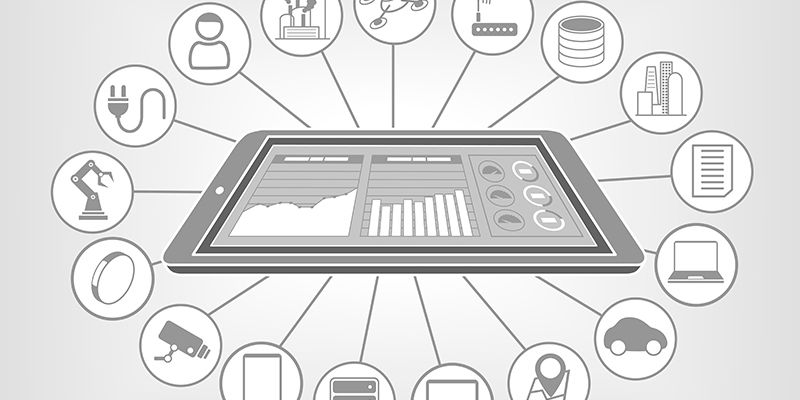
Every August, I have the pleasure of traveling to Austin, TX for National Instruments’ (NI) conference (NIWeek).
This year, the 21st annual conference, held from August 3rd through the 6th at the Austin Convention Center, brought together more than 3,800 of the brightest minds in engineering, research, and education from a wide range of disciplines – from telecom and robotics to automotive and energy – all hoping to find a new piece to their engineering puzzle to help accelerate productivity for software-defined systems in test, measurement, and control.
What I find most useful, and fascinating for that matter, are the keynote presentations that kick off every day. They provide you with the highlights from the exhibits and sessions you will experience throughout the week in short, fast-moving brain dumps that make it slightly difficult to process without a hot, dark brown performance-enhancing drug slowly cooling by your side. Caffeine!
I found the keynote on day two to be of particular interest, as it covered industrial IoT (IIoT) and discussed how LabVIEW System Design Software was the platform for IIoT and big data long before the buzzwords entered the lexicon.
Building out Global IoT
By now, most design engineers heard the excited estimations calling for 50 billion connected devices by 2020. In a segment dubbed “5G in the IoT,” Dr. Andrea Goldsmith, a professor of electrical engineering at Stanford University, discussed how the explosive growth in demand for wireless devices, faster data, and more reliable, predictable networks will impact future industries.
While many of the predicted industries impacted were, for lack of a better term, predictable (driverless cars, health and wellness – including textiles and implantables – and automated factories), she also discussed the impending advances in remote surgery.
Powered by low-latency communication, high-quality visuals, real-time sensor data, and tactile response times, remote surgery stands to benefit anyone without proximal access to a suitable surgeon. While this technology stands to be very disruptive in the medical industry, we still have some development ahead of us.
As Goldsmith says, “We can’t even get YouTube to work reliably over networks.” Given my success watching the latest episode of Engineering Newswire in my office, 15 feet away from where we shoot it, and 10 feet away from where we upload it, I’m still reticent to let a surgeon in my body from anywhere beyond arm’s length. Goldsmith also noted opportunity in remote construction – similar to remote surgery, but with bigger toys in a larger play area.
According to Goldsmith, future networks will run efficiently and wirelessly on software-defined wireless networks, but the biggest challenge is the amount of supported devices, particularly very low-power, low-data rate devices, in body sensors (that last a decade), as well as dense deployments and access points.
A stuttering House of Cards episode typically had me fired up over connectivity, but the prospect of remote liver surgery gave me a bit more perspective regarding the implications of a more powerful IoT infrastructure.
Watson Replaces the Maintenance Man
While other segments provided an interesting look at the present and near future of IIoT – you’d be well-served to investigate the Industrial Internet Consortium’s efforts in providing a framework for IIoT – I found Greg Gorman’s “Predictive Maintenance” segment hit closest to home.
Gorman is the director of product management for IBM’s IoT engineering solutions department, which is working with NI on a predictive solutions maintenance testbed. The testbed addresses cloud integration, interoperability, security, and the scalability of end-to-end analytics.
Essentially, the testbed merges edge analysis with weather and social data to take quicker action on the edge. Currently, processing power is outpacing network bandwidth, but the essential idea here is that the solution would collect information from multiple resources and feed it to Watson, IBM’s “cognitive system enabling a new partnership between people and computers,” which will be able to predict future business conditions and adjust accordingly, like a maintenance precog for you sci-fi enthusiasts eagerly awaiting the AI apocalypse.
The testbed could lead to a solution for increasingly taxed nano and microgrids (as well as the national grid). The only reason this solution hits particularly close to home is, as many of you know, I cut my teeth next to some of the more colorful maintenance personalities as I worked throughout my college career, and I’d hate to see a time when Watson causes Junior and Angel to be out of a job.
Overall, the trip to Austin proved fruitful, and I encourage you all to attend at least once, if for no other reason than to experience the brain dump that is NIWeek. Above all, the one thing NIWeek proved to me is that, for those who think we are exhausting IoT as an opportunity as well as a buzzword, we have only just begun.
What are your expectations for IoT? And have you ever been to NIWeek? Share your thoughts and experiences, and email me at [email protected], or tweet @djamesmanny.
This blog originally appeared in the October 2015 print edition of PD&D.
Filed Under: M2M (machine to machine)




